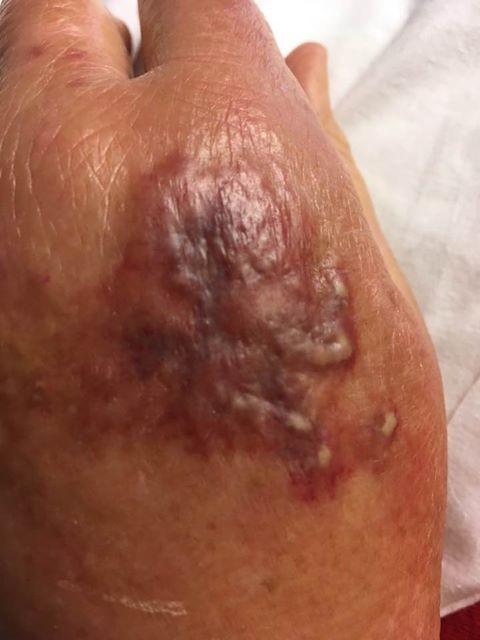Reports of dangerous “flesh-eating” bacterial infections are increasing along the Gulf Coast, raising alarm among health officials and residents alike. These rare but aggressive infections, medically known as necrotizing fasciitis, can rapidly destroy skin, muscle, and other tissues, requiring urgent medical intervention. With cases emerging in coastal communities, experts are urging the public to stay informed about symptoms, risk factors, and preventive measures. This article breaks down what you need to know to protect yourself and your loved ones from this potentially deadly threat.
Flesh-eating Bacteria Surge Raises Alarm Along the Gulf Coast
Health officials along the Gulf Coast are on high alert as cases of necrotizing fasciitis, commonly known as “flesh-eating bacteria,” have shown a concerning increase this season. This severe bacterial infection rapidly destroys skin, fat, and tissue covering the muscles, requiring urgent medical intervention. Experts link the surge to warmer water temperatures and recent storms, which create ideal conditions for the bacteria to thrive in coastal waters. Residents and visitors are urged to exercise caution when engaging in water activities, especially if they have open wounds or compromised immune systems.
Prevention remains the most effective defense against this dangerous infection. Key safety measures include:
- Avoiding swimming with open cuts or abrasions
- Thoroughly cleaning any wounds with soap and water immediately after exposure
- Seeking prompt medical attention if symptoms such as redness, swelling, or severe pain develop
| Symptom | Action |
|---|---|
| Increasing redness or swelling | See a healthcare provider immediately |
| Fever and chills | Visit emergency services |
| Severe pain out of proportion | Call 911 or go to ER |
Understanding Vibrio Vulnificus and Its Risks in Coastal Waters
Vibrio vulnificus, a naturally occurring bacterium found in warm coastal waters, has recently been linked to a surge in severe infections across the Gulf Coast. Often dubbed the “flesh-eating” bacteria, it can enter the body through cuts or open wounds exposed to seawater or through the consumption of raw or undercooked seafood, particularly oysters. While many exposure cases result in mild symptoms, for some, especially people with weakened immune systems or chronic liver disease, the bacteria can cause rapidly progressing infections, sepsis, and, in extreme cases, death.
The risk is particularly high during the warmer months when water temperatures rise, creating favorable conditions for the bacteria to thrive. Residents and visitors to coastal areas should take the following precautions:
- Avoid swimming with open wounds or cuts.
- Wear protective footwear when walking in tidal areas.
- Ensure all seafood is thoroughly cooked before consumption.
- Seek immediate medical attention if symptoms of infection develop after exposure.
| Exposure Type | Potential Risk Level | Recommended Action |
|---|---|---|
| Open wound + seawater contact | High | Clean wound, avoid exposure, monitor symptoms |
| Eating raw oysters | Moderate to High | Cook thoroughly, purchase from reputable sources |
| Swimming with intact skin | Low | General hygiene and avoid polluted waters |
Symptoms and Early Warning Signs You Should Never Ignore
Recognizing the initial signs of a necrotizing soft tissue infection can be life-saving. Early symptoms often include severe pain disproportionate to the visible injury, redness, and swelling around a wound, and rapid progression of skin discoloration—ranging from deep red to purple or black. Other early warning signs include fever, chills, and fatigue. It’s crucial to act immediately if these symptoms appear, especially after exposure to saltwater, as the bacteria thrive in coastal areas.
Healthcare professionals emphasize that if you notice any of the following, seek urgent medical evaluation:
- Increasing pain at the wound site even after pain medication
- Rapid swelling and warmth spreading beyond the initial injury
- High fever or sudden chills
- Skin blisters, black spots, or ulcers
- Confusion or dizziness, indicating systemic infection
| Symptom | Why It Matters |
|---|---|
| Severe Pain | Often more intense than expected for wound size |
| Skin Discoloration | Indicates tissue death underneath |
| Fever & Fatigue | Signs of systemic infection spreading |
| Rapid Swelling | Suggests aggressive bacterial spread |
Preventive Measures to Stay Safe While Enjoying Gulf Coast Beaches
Beachgoers can take several simple yet effective steps to protect themselves from Vibrio vulnificus, commonly known as flesh-eating bacteria, which thrives in warm Gulf Coast waters. When enjoying the sand and surf, always avoid swimming with open cuts, wounds, or sores, as these provide direct entry points for infection. Promptly clean and disinfect any skin injuries with antibacterial soap and freshwater immediately after exposure to saltwater. Wearing waterproof bandages can also act as a barrier against harmful bacteria. It’s crucial to monitor water conditions and avoid swimming in areas with known contamination or after heavy rainfall, when bacteria levels tend to spike.
Practicing safe habits extends beyond the beach. Individuals with compromised immune systems, liver disease, or diabetes need to take extra precautions, such as avoiding raw or undercooked shellfish, particularly oysters, which are common carriers of Vibrio bacteria. The following table outlines key preventive measures and common risk factors to keep in mind:
| Preventive Measures | Risk Factors |
|---|---|
| Cover cuts with waterproof bandages | Weakened immune system |
| Rinse with freshwater post-swim | Liver disease |
| Avoid swimming after heavy rain | Chronic illnesses |
| Do not consume raw seafood | Open wounds or sores |
Future Outlook
As cases of flesh-eating bacteria continue to emerge along the Gulf Coast, public health officials urge residents and visitors to remain vigilant. Prompt treatment and awareness of warning signs remain critical in preventing severe outcomes from these rare but serious infections. Staying informed and practicing proper wound care can help reduce risks as local communities navigate this ongoing concern. For the latest updates and expert guidance, continue following trusted news sources and official health advisories.




